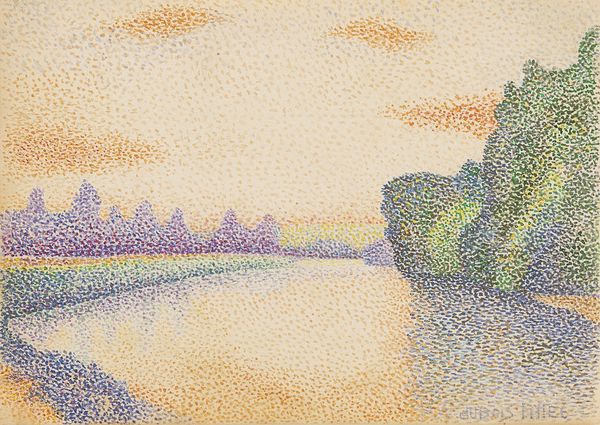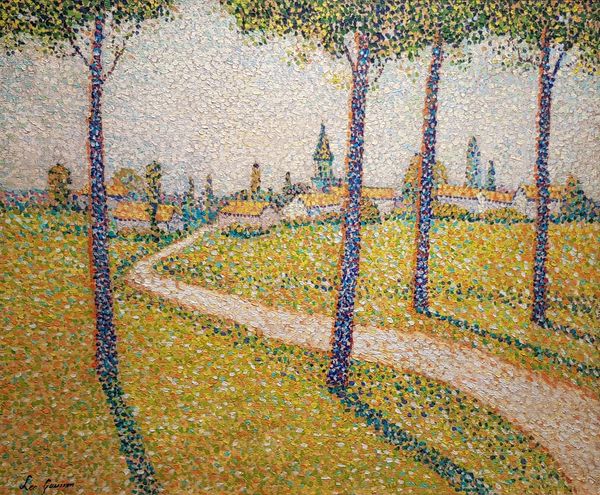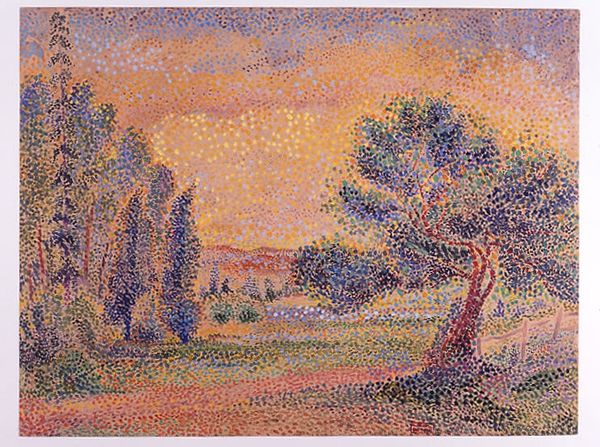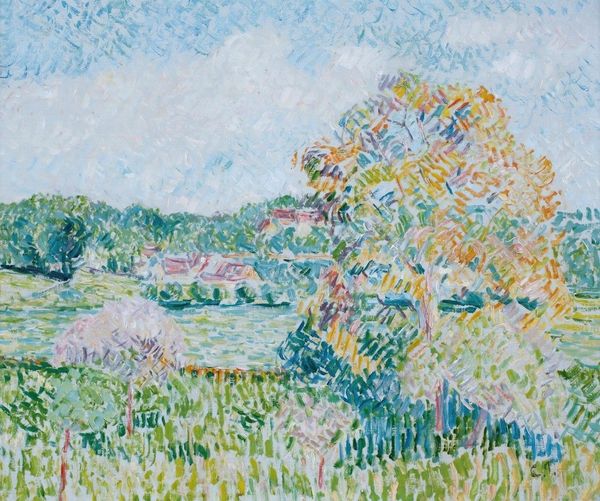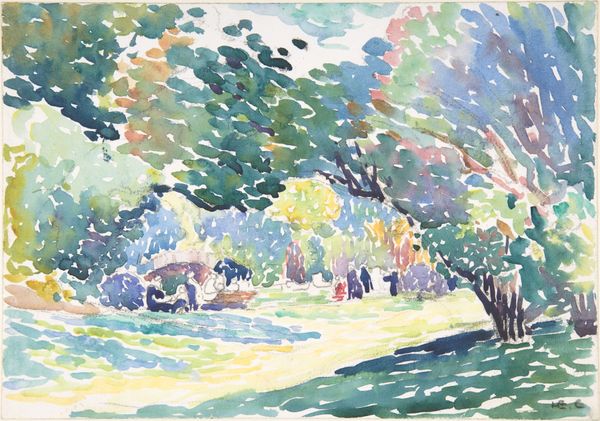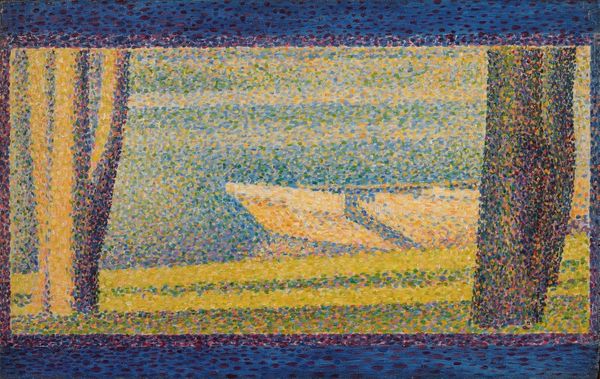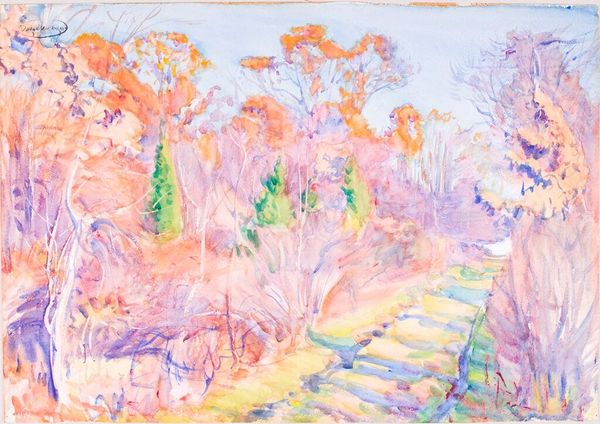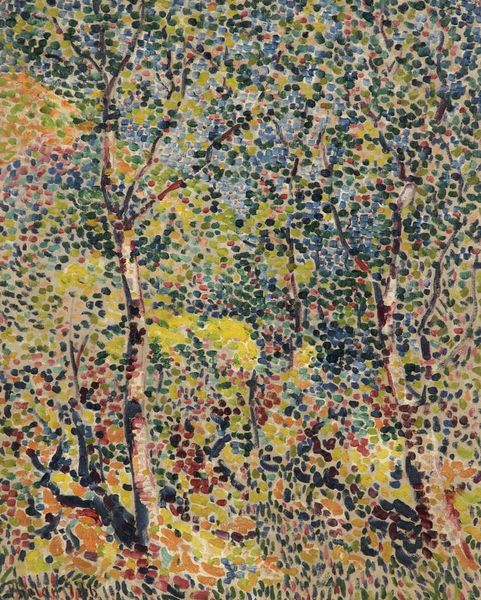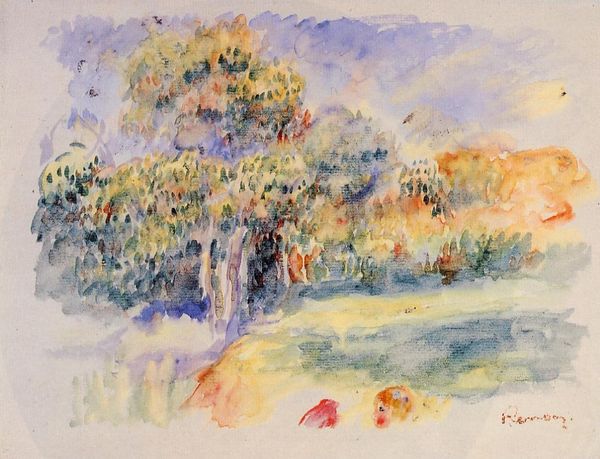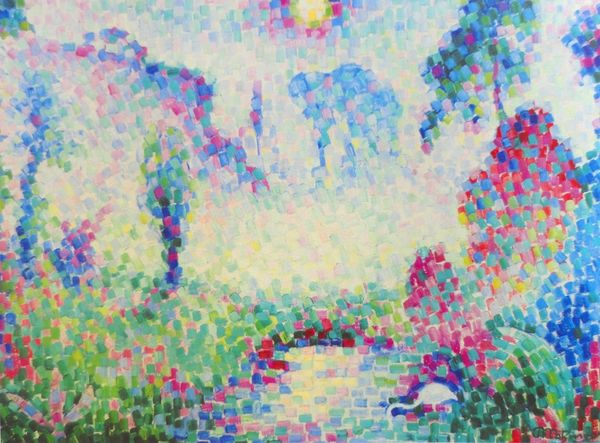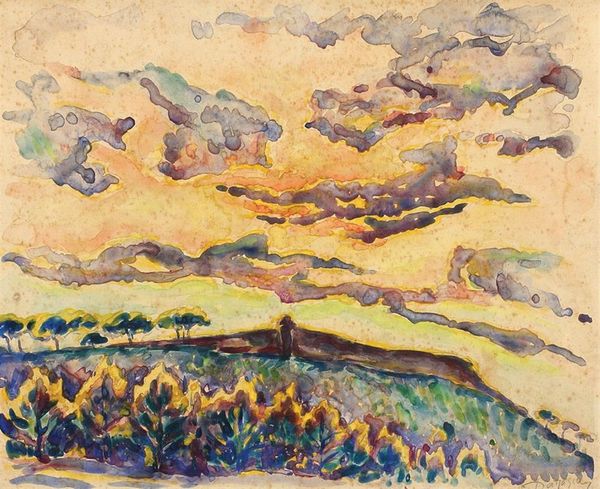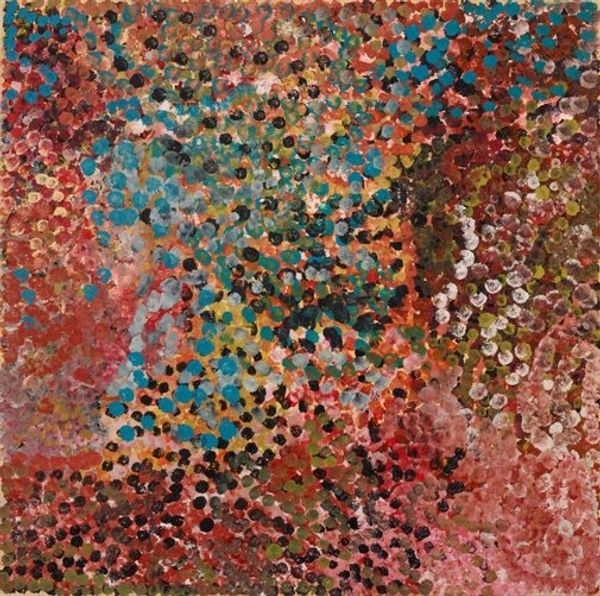
painting, plein-air, watercolor
#
painting
#
impressionism
#
plein-air
#
landscape
#
impressionist landscape
#
watercolor
#
france
#
post-impressionism
#
watercolor
Copyright: Public domain
Curator: Let’s turn our attention to Camille Pissarro’s "Eragny Landscape," a watercolor from 1886, now residing at the Morgan Library in New York. What are your first thoughts? Editor: My first impression is... a gentle haze. The landscape almost dissolves before my eyes. The whole thing feels incredibly light and airy, like a memory more than a direct observation. Curator: It’s interesting you say that. Pissarro was deeply involved in Impressionism, moving toward Post-Impressionism, and here he employs a Pointillist technique, building the scene with tiny dots of color. Think of it as a mosaic of emotions. Editor: Exactly! And the choice of watercolor accentuates that ethereal quality. Watercolors have always been associated with fleeting moments, capturing light and atmosphere more than concrete form. The dots aren't just dots; they feel like individual emotional responses to the landscape. Curator: Consider those autumn colors—touches of red, yellow, and green – all dancing together. You get a distinct sense of a harvest, but it goes beyond agriculture; the colors represent a harvest of something internal, perhaps, for the painter. It feels very personal to me, the way one might distill one's memory of a place in colors alone. Editor: I see how that adds to the iconographic depth. Autumn itself carries layers of meaning - decline, abundance, reflection, anticipation for winter, but here the Pointillist style adds another dimension. Each dot, a small death and rebirth of color and feeling. Curator: I think that's quite poetic. I like how you tie the visual technique to broader symbolism. This isn't just about painting a field. Pissarro’s style almost suggests that even landscapes contain deeper symbolic and emotional elements. Editor: Yes, that sense of hidden depths lurking beneath the surface calm. It reinforces how we connect, culturally and psychologically, to the changing seasons. They are not just physical changes, but transformations of the spirit, too. Curator: Absolutely. Looking closer now, it’s interesting how much of the sky bleeds into the field, further diminishing our sense of definitive form or detail, even. So much emotion. Editor: Precisely! It is so rewarding when we linger longer, letting our minds absorb all the emotional meaning present. Curator: Couldn't agree more! It is always there to find, when we let our minds become active in observation.
Comments
No comments
Be the first to comment and join the conversation on the ultimate creative platform.
